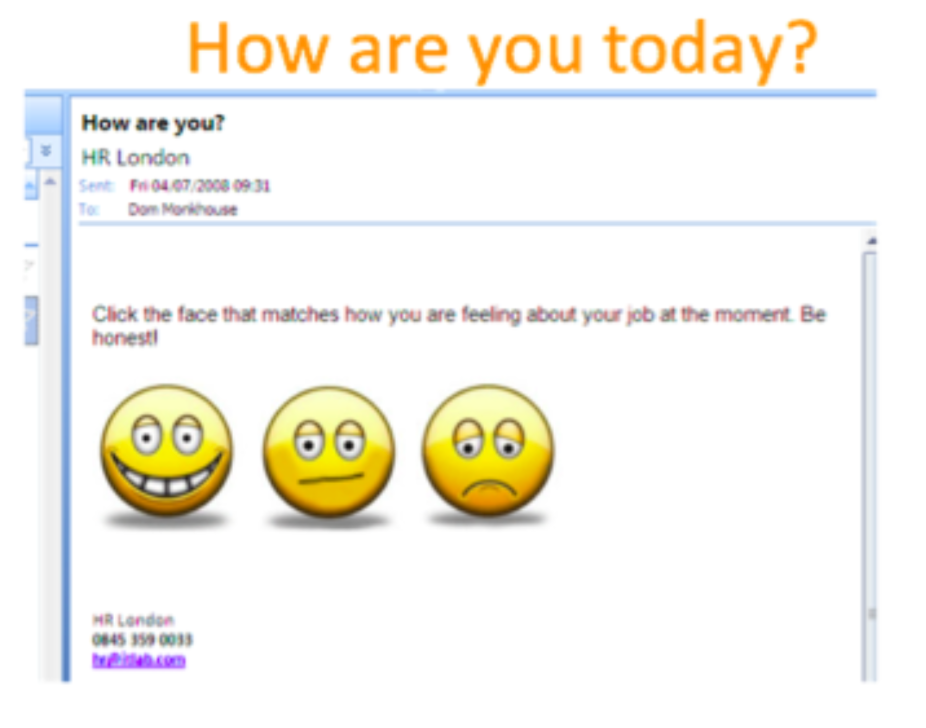Scaling a business isn’t easy. It takes effort, dedication and a systematic approach. You need to adopt new ways of working, approaching these with consistency and repetition until they become habits. That’s why the Rockefeller checklist is so useful – it provides a blueprint for growth.
The fifth habit is all about employee input – ensuring it’s collected to identify obstacles and opportunities. One thing’s for sure. Your front-line staff will be the first to know when something’s wrong. And that their managers don’t ask or listen. You need to fix this to have any hope of long-term growth. It’s essential.
When your business is small, there’s little or no friction between management and staff. Everyone knows what’s going on and decisions are based on consensus. As it grows, layers and hierarchy start to erode communication. I’ve seen this time and again. As MD of growing tech companies, staff would often assume that I was too busy to bring something to my attention. This is something I had to work on all the time. It’s vital to keep communication channels open.
So how do you ensure your staff feel heard?
Get it right from the very beginning
To build a listening culture, you need to start with new hires. Make it clear from the outset that their views and ideas are important. On their first day, we gave all new staff a little black book. Not just any old black book but a good quality Moleskine. I’d say, ‘Because you’re new, you have a special talent. I want to know what you think is strange, weird or badly done around here. Write this down and we’ll fix it.’
I would then arrange to meet them every month and we’d discuss their suggestions. This was incredibly effective. It demonstrated the type of organisation they’d joined and the fact that their views were genuinely important. It also got rid of low-level annoyances in the office and modelled how to behave in the organisation from the very start. I wanted to build muscle around ownership. And also weed out people who, through their attitude, weren’t good fits. It’s amazing how even the best recruitment process can still let in a few of the wrong people.
Ensure managers are listening and acting on feedback

Every one of your managers should be gathering feedback and acting on it, every day. It’s about finding the stones in people’s shoes and removing them. Taking away the little annoyances that soon build into big issues if they’re not resolved quickly.
It’s not a huge burden but can bring massive benefits. Make sure managers get into the habit of closing the loop on any obstacles. A simple spreadsheet can be all it takes – noting down issues that have arisen in daily huddles or weekly team meetings. These should be reviewed with the Executive Team at least every month, if not sooner, noting which issues are being tackled and checking that managers are making enough progress.
Sometimes issues raised are bigger and feed into quarterly objectives or an overall swim-lane of work. Opportunities often crop up from front line feedback. Maybe a conversation with a customer changes the way you’re describing a product or you hear of new competitor activity or an important regulatory change. This knowledge is like gold-dust – and it exists in the heads of your front-line staff. You need a system that captures it and transforms it into operational intelligence.
Crucial to all of this is acting on feedback. There’s nothing worse than being asked your opinion and your views disappearing into a black hole. No wonder so many companies are hot-beds for cynical, ‘them and us’ type attitudes. This is the reason why productivity levels fall. Monitor managers closely, making sure they aren’t sitting on employee issues. Every one of them needs to show they’re listening.
Find a feedback mechanism that works
Since the Rockefeller Habits were written, there’s been an explosion of new platforms to help companies gather and measure employee feedback and engagement. Many of my clients use Office Vibe, TINYpulse or fridaypulse.com to get weekly feedback and typically review the results in monthly management meetings. This is great to a point. But it’s not a replacement for individual, face-to-face conversations with staff. There’s no doubt in my mind that this has the greatest impact.
As MD of IT Lab and later Peer 1, I stole an idea from Alexander Kjerulf, the Chief Happiness Officer and got my development team to code it. Every Tuesday at 9 am, emails arrived in staff in-boxes with simple, thumbs up (‘Yay’), middle (‘Meh’) or down (‘Nah’) graphics. I wanted to measure how they were feeling that week and results came only to me. This quick and easy survey told me who had taken part, their responses over time, whether they normally responded but had stopped etc. Every non-response was treated as a negative and I made a point of calling or popping by the desks of unhappy staff to see what was up. Occasionally people would click the ‘Nah’ button to test me out (particularly new hires). Pretty embarrassing when I called them!

Why not also set up an email address for feedback? This has worked brilliantly for me in the past. I introduced an open email address (stupidrules@CEO your company.com) and gave a £10 Amazon voucher to anyone who flagged up stupid rules or suggested a way we could improve. And we acted on as many of these suggestions as possible. In the end, we got 350 valid ideas and turned them into 19 projects. There was so much pent up stuff to sort out.
Finally, I would always recommend the Gallup Q12 survey every six months. It’s quite simply one of the best mechanisms for measuring employee engagement and will give you invaluable data on the performance of your management team.
Consider making feedback anonymous

Should you make staff surveys anonymous? It all depends on the levels of trust in your organisation. When they first asked staff for feedback, some of my clients received low levels of return borne out of fear of repercussions. If you’ve lost trust and need to re-build this, look for easy and quick opportunities where you can make promises and keep them. This should be prioritised before you embark on a more formal approach to seeking feedback.
Some engagement surveys are, by their nature, anonymous. Examples include the Gallup Q12, which is anonymous to encourage open, honest feedback as well as third party surveys such as ‘Great Places to Work’ and ‘Best Companies’. My view is you need a balance. I would rather have comments attributable so that if the issue raised is really specific, I can sort it out. With anonymous surveys, it’s hard to track and feedback on progress.
As mentioned earlier, one way around people’s reservations is to make sure all responses come to you and you only, ensuring confidentiality. Then you can make sure when you discuss feedback with managers, you keep the conversation general. Alternatively, you can make it optional for survey respondents to give their name. This, in itself, is a good way of measuring trust.
Encourage staff to take responsibility for issues
Wherever I’ve worked, I’ve encouraged staff to get on with sorting stuff out themselves. If something was bothering them, I’d give them a budget of £100 and tell them to put it on expenses. The important thing was it didn’t land on my desk. You want the cultural flywheel of your company to spin on its own, without you.
I once visited CibaVision’s offices in Portsmouth and was really struck by their approach to empowering staff. They’d started a staff suggestion scheme and presented it on the wall with a movie-production theme. You could see the process laid out before you. First the ‘Script Ideas’, with the number of votes next to them – a great way to crowd-source the things that mattered to people. Then ‘In Production’ where ideas with the most votes were progressed. And finally ‘In The Can’ – the finished projects complete with photos. The staff could collaborate on issues they shared and then see their ideas being taken right through to fruition. Brilliant!
Build cross-functional communication

Rockefeller Habit #5 suggests that all executives have a stop/start/continue conversation with at least one employee every week. I would strengthen this by insisting that these employees are from different teams to the executive’s function. Whenever I’m coaching, I try to get senior leaders to think less about their silo and more about the executive team being their number one priority. How do I want them to behave? Like they’ve got each other’s backs. There should be no fear of an executive colleague talking to their functional team member and what they might uncover.
These conversations mean that at every executive meeting, decisions are sanity checked and taken with a full understanding of any ramifications for staff. They’re also collective decisions made by the whole team rather than just the leader of the relevant silo. The impact on staff can be huge. If you take six execs, having six conversations a week, it equates to over 300 conversations a year. It won’t take long before every employee starts to feel that their opinion is valued.
Listening, (and I mean really listening), to staff is essential to engagement and productivity. Every member of your executive and management team needs to understand this and make it a priority. With a systematic, deliberate approach, you could unlock up to 40% discretionary effort from your staff. Just think of the difference this could make to your business growth!
Written by business growth coach Dom Monkhouse. Find out more about his work here.

